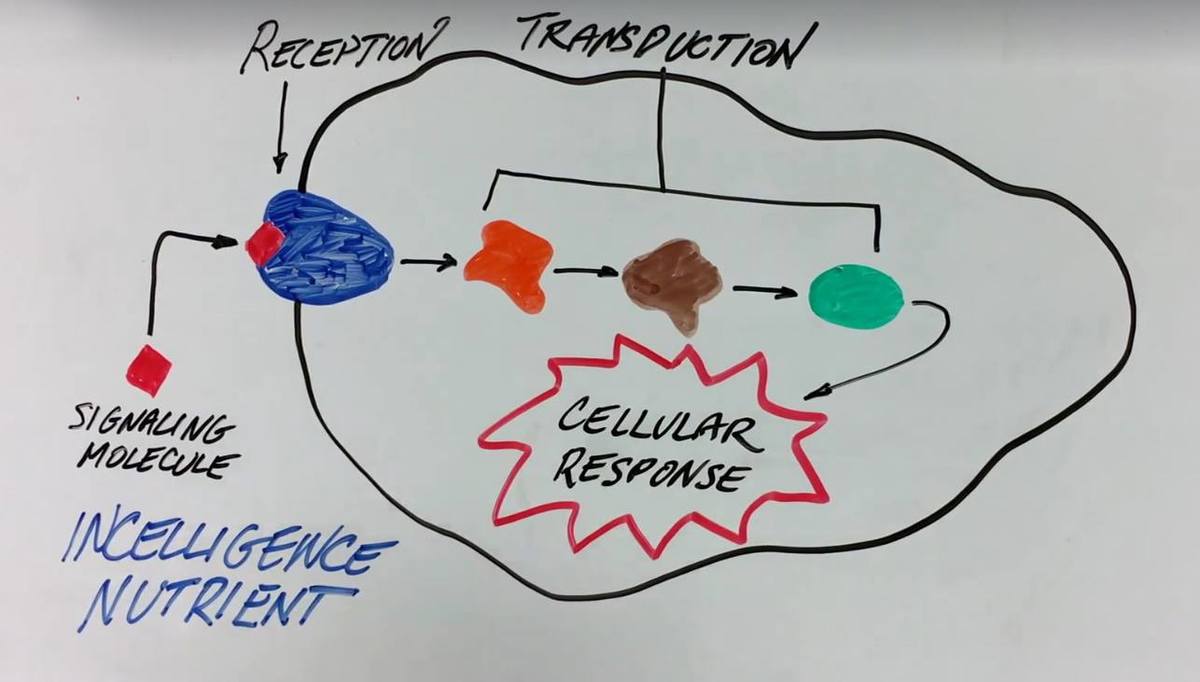Last Updated on October 12, 2021
Cell signaling is a vital process that allows cells to communicate with each other and respond to their environment. This intricate communication network is essential for the survival, growth, and development of all living organisms. In this comprehensive guide, we will delve deep into the world of cell signaling, exploring its mechanisms, types, and significance in maintaining physiological balance.
Understanding Cell Signaling
Cells are remarkably intelligent entities capable of receiving, processing, and responding to signals from their surroundings. These signals help cells adapt to changes in their environment, coordinate activities, and maintain homeostasis. Importantly, cells are not merely passive recipients; they actively send signals to other cells, establishing a complex web of communication.
Types of Cell Signals
Cells receive a variety of signals, primarily chemical in nature. These include:
- Hormones: Chemical messengers secreted by endocrine glands that travel through the bloodstream to target organs.
- Neurotransmitters: Chemicals released by neurons to transmit signals across synapses.
- Growth Factors: Proteins that stimulate cell growth, proliferation, and differentiation.
- Extracellular Matrix Components: Molecules secreted by cells that provide structural and biochemical support to surrounding cells.
In addition to chemical signals, cells respond to mechanical and physical signals. For instance:
- Blood Sugar Regulation: When blood sugar levels rise, the pancreas releases insulin, signaling cells to absorb glucose, thereby reducing blood glucose levels.
- Sensory Response: Skin sensory cells respond to touch, while ear sensory cells react to sound waves.
- Blood Pressure Regulation: Specialized vascular cells detect changes in blood pressure and send signals to adjust heart rate and blood vessel diameter accordingly.
How Cells Recognize Signals
Cell signaling begins when a signaling molecule binds to a specific receptor protein located on the cell membrane. These receptors are highly specific, ensuring that each receptor binds only to its corresponding signaling molecule. For example:
- Insulin Receptors bind insulin.
- Serotonin Receptors bind serotonin.
- Vitamin D Receptors (VDR) bind hormonally active vitamin D (1,25(OH)2D3).
This specificity ensures precise communication and appropriate cellular responses.
The Process of Signal Transduction
Once a signaling molecule binds to its receptor, it triggers a series of intracellular biochemical reactions known as signal transduction. This process involves:
- Receptor Activation: The binding of the signaling molecule changes the receptor’s shape, activating it.
- Signal Amplification: A single signaling molecule can activate multiple intracellular signaling molecules, amplifying the initial signal.
- Intracellular Signaling Pathways: These pathways, also called signal transduction cascades, relay the signal from the cell surface to the nucleus or other cellular components.
Cellular Response to Signals
The final step in cell signaling is the cellular response, which can include:
- Gene Expression Regulation: Turning specific genes on or off to produce or inhibit certain proteins.
- Enzyme Activation or Inhibition: Phosphorylation (addition of phosphate groups) changes enzyme activity, either activating or deactivating them.
- Cellular Activities: Such as cell division, migration, or apoptosis (programmed cell death).
Importance of Cell Signaling in Health and Disease
Cell signaling is crucial for various physiological processes, including:
- Growth and Development: Proper signaling ensures cells grow, divide, and differentiate correctly.
- Immune Response: Cells communicate to detect and eliminate pathogens.
- Nervous System Function: Neurons rely on signaling for transmitting information.
However, errors in cell signaling can lead to diseases such as:
- Cancer: Uncontrolled cell division due to faulty signaling.
- Diabetes: Impaired insulin signaling.
- Neurodegenerative Diseases: Abnormal signaling in neurons.
Conclusion
Cell signaling is a fundamental aspect of cellular communication, enabling cells to interact with their environment and each other. This complex process involves various signaling molecules, receptors, and intracellular pathways that work together to maintain physiological balance. Understanding cell signaling not only provides insights into basic biological functions but also paves the way for developing treatments for numerous diseases. As research continues, our knowledge of cell signaling will undoubtedly expand, offering new possibilities in medicine and biotechnology.
Optimizing this blog for search engines involves using relevant keywords such as ‘cell signaling’, ‘signal transduction’, ‘cell communication’, ‘hormones and receptors’, and ‘cellular response’. Incorporating these terms naturally throughout the text enhances its visibility and accessibility, ensuring that readers searching for information on cell signaling can easily find and benefit from this comprehensive guide.







